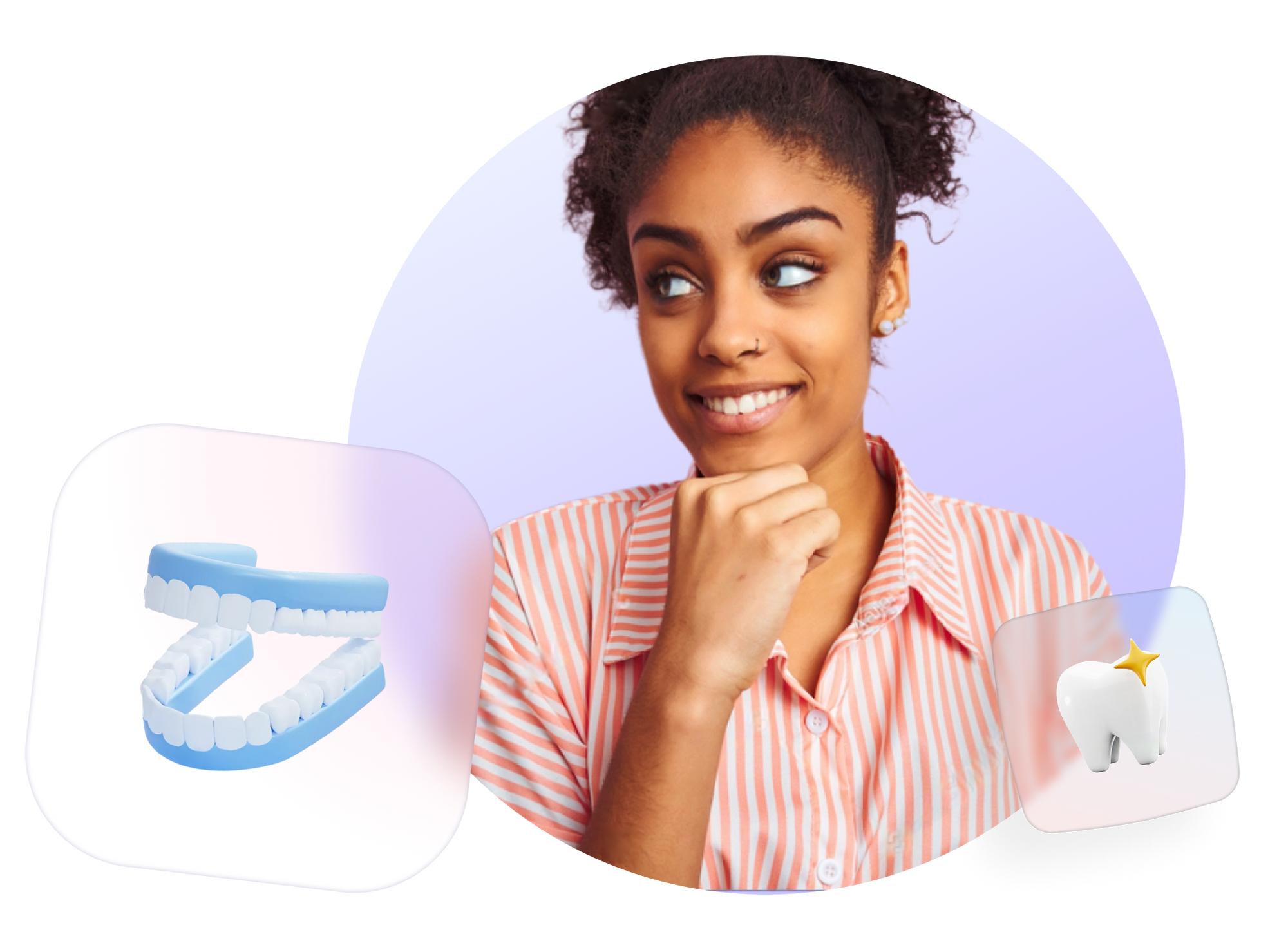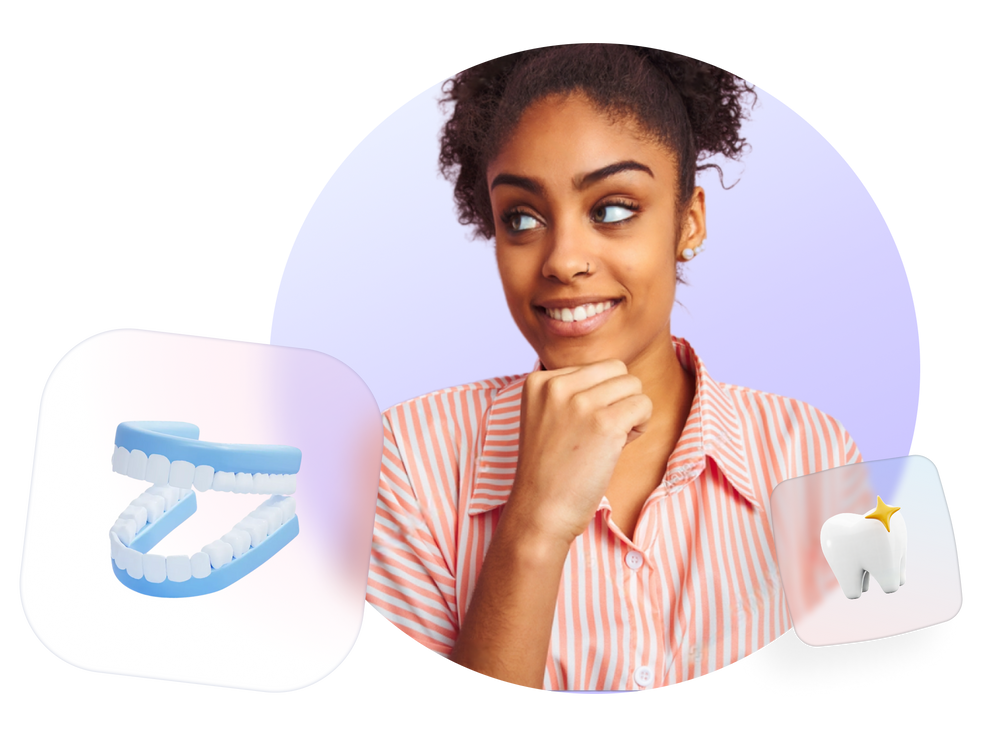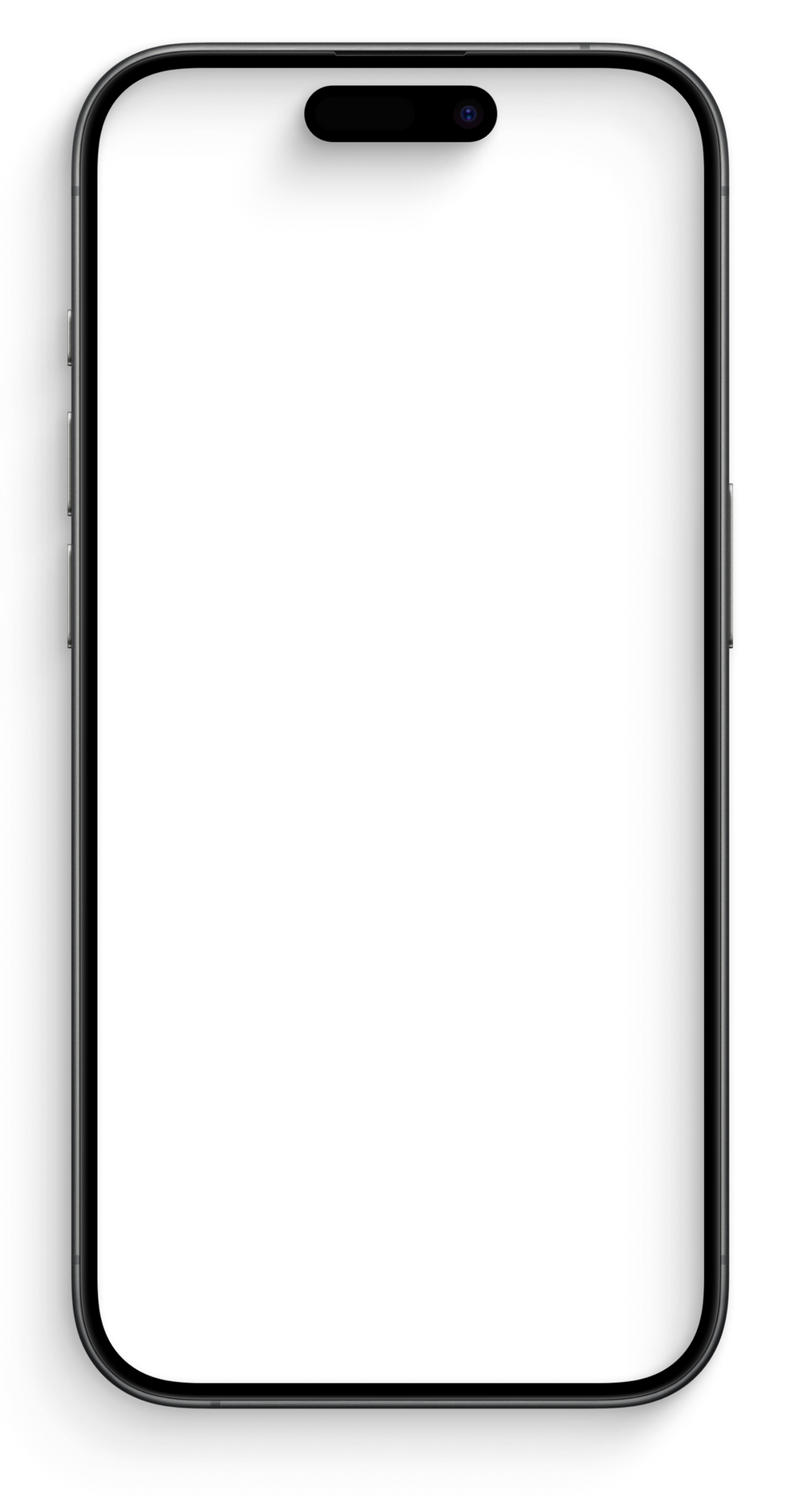

Whitening Explained
Teeth whitening uses safe, low-peroxide treatments to effectively eliminate stains, brighten enamel, and significantly improve your smile’s appearance. These procedures are non-invasive and performed using clinically approved gels and light-activated systems to maximize results.
smile transformation
Glow-Up
John D. — "My teeth were visibly whiter after just one session. The treatment was quick and painless."
Lisa V. — "I had deep stains from coffee. After two sessions, my smile looks brand new!"
Marco S. — "The best part was that I saw results instantly, and the sensitivity was minimal."
Bright Smile Basics
Toothfairy App: Create your AI whitening makeover.
01E-consultation: Book a FREE e-consultation to plan your whitening.
02Whitening Treatment: Application of a gentle yet effective whitening gel using trays or light-activated systems.
03After care: Guidance on maintaining and prolonging your whitening results.
04Bright Smile Basics

Teeth Straightening Pricing
All with 0% monthly finance plans, and 24/7 UK dentist supervision
Core Plan
€99
+ FREE 3D SCAN
Includes:
- Clear aligner package (full set)
- Monthly AI-assisted progress checks
- Retainers included for lasting results
- 24/7 dentist supervision from anywhere
- No hidden fees for aligner replacements
- Monitoring via Tooth-fairy app
Pro Plan
Optional
+ €250 upgrade
Everything in Core Plan, plus:
- Complex cases (severe crowding, gaps)
- Space creation and advanced orthodontics
- Dedicated senior orthodontist
- Custom additional aligners as needed
Whitening Guide
Why custom-made?
How does it work?
Why peroxide?
Safe percentage
Will I end up with a fake looking ‘Hollywood’ smile?
Why custom-made?
Custom whitening trays prevent gel from leaking out and irritating the gum tissue. And when you get your trays from a dentist, you'll also know that the accompanying gel contains an effective but safe level of bleaching agent, which is not always the case with over-the-counter products.
How does it work?
Hydrogen peroxide is an oxidising agent. It breaks down chemical compounds into smaller, less pigmented molecules. In teeth whitening, it breaks down the pigments in teeth. These large pigmented molecules are the cause of yellow or stained teeth. By breaking down these molecules, hydrogen peroxide effectively lightens the colour of teeth.
Why peroxide?
The ADA oversees tooth whitening products. There are two ways these products whiten teeth. Non-bleaching products, like whitening toothpastes, contain chemicals that remove surface stains and debris, restoring the tooth's colour. Most bleaching products contain carbamide peroxide, which breaks down into hydrogen peroxide and urea. The active bleaching agent is the weak acid hydrogen peroxide, H₂O₂. It steals the electrons that hold the atoms together, causing the molecules to fall apart.
Safe percentage
Choose the right concentration: A low concentration of Hydrogen Peroxide (around 3% to 6%) is safe to use for teeth whitening usually without any side effects. Hydrogen Peroxide can produce certain side effects like gum or tooth sensitivity if used often in high concentration.
Will I end up with a fake looking ‘Hollywood’ smile?
Dentist supervised home whitening is a gradual process, so you can decide quite easily when you are happy with the shade of your teeth and when you would like to stop the process. With teeth whitening, even when the teeth become very white, they should still look natural and pleasing without looking fake. This effect is often owing to the use of overly white porcelain crowns or veneer, which are often more opaque and less natural looking than your own teeth.
Why Toothfairy?

AI-Powered Transformations
Experience Hollywood smiles created by our AI Smile Simulator

Personalized Approach
Get a smile tailored just for you.

Top Dentists at Your Fingertips
Find trusted dental studios near you.
Customer Stories
Say Hello
Have questions or need assistance? We're here to help.
Frequently Asked Questions
Is teeth whitening safe for enamel?
Whitening is considered safe when performed under professional supervision. The products we use are approved and designed to protect your enamel while delivering great results.
How long do whitening results last?
Results can last anywhere from several months to a few years, depending on lifestyle habits like smoking or consuming staining foods and beverages.
Can sensitive teeth be whitened?
Yes, but extra care is taken. We offer treatments specially formulated for patients with sensitive teeth, using lower concentrations and desensitizing agents.
Are there foods to avoid after whitening?
Yes, we recommend avoiding coffee, red wine, tea, berries, and colored sauces for at least 24–48 hours after treatment.
How often can I safely whiten my teeth?
Most patients can safely whiten their teeth once or twice a year. Overuse can lead to sensitivity or enamel wear, so it's best to consult your dentist.

